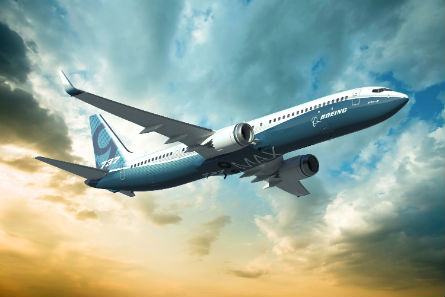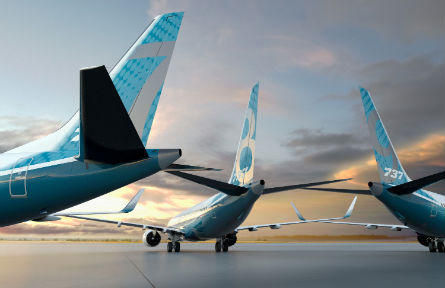That Boeing has learnt its lesson from the overlong development of the 787 and 747-8 can be seen in the proposed timescale for the re-engined narrowbody, named the 737 Max, which the airframer launched on 30 August.
Boeing's cautious approach on the programme envisages a timescale that ranges between 64 and 76 months, depending on its first delivery in 2017 considerably longer than the airframer's original 48 month launch-to-delivery plan for the clean-sheet 787.
"One of things we've learned on the 747 and 787 programmes is we want to make sure that any date that we quote is the date that we can meet. And I'd rather under-promise and over-deliver, rather than over-promise and under-deliver," said Jim Albaugh, Boeing Commercial Airplanes ceo.
 |
|---|
© BoeingThe model incorporates Boeing's minimum change to the family, but integrates the new higher bypass engine |
With 496 commitments mostly from non-US customers, but including 100 from American Airlines Boeing is off to a later, but galloping start in the narrowbody market share battle against Airbus, with 1,200 commitments for the Airbus A320neo family.
Boeing says it is armed with a 16% fuel burn advantage over today's A320 and 4% advantage over the A320neo, providing a 7% edge in operating costs.
FAMILY AFFAIR
The aircraft, now a family of three, replacing the 737-700, -800 and -900 with the the re-designated 737-7, -8 and -9, will be powered by CFM International's Leap-1B engine, maintaining the engine-maker's exclusivity on the type held since the 737-300 received its first order in March 1981.
That engine and its final fan size will guide the performance of the updated jet, as it goes head-to-head against the 78in and 81in fans offered by the Leap-X1A and Pratt & Whitney PW1100G, respectively, on the A320neo.
Boeing has narrowed its choices to two 168cm or 173cm (66in or 68in) and a final decision is expected in the "next several weeks", Albaugh said.
At issue, the airframer must maintain a 43cm (17in) ground clearance underneath its nacelles to avoid contact with taxiway lighting. Boeing's current CFM56-7BE engine, at 156cm (61in), provides 15cm of margin, before requiring changes to the aircraft's nose gear, prompting changes across the airframe.
"Certainly with the 66 [inches] there's no modifications, and I think even with the 68 [inches] a very low probability we'll have to touch the front gear," said Albaugh, who added that the Leap-1B is 1012% more efficient than the CFM56-7BE it will replace.
The balancing act for Boeing is minimising the amount of change to the 737 family to integrate the new higher bypass engine.
"With a bigger fan you get more efficiency because of the bypass ratio. But also what you find with the bigger fan is what you find is you get more weight and more drag," he added.
As it fully develops its final schedule, Boeing's fan size decision, and the resulting airframe design changes, are factored into its plan. If it chooses the largest fan, said Albaugh, "we have that built into our reserve for the development of this programme".
TAKING THE LEAD
At the helm of the programme is Bob Feldmann, who most recently ran Boeing's Surveillance and Engagement unit of its business, where he guided the P-8A Poseidon's development, itself a heavily modified 737-800.
The programme's deputy and chief engineer Michael Teal, formerly chief engineer on the 747-8 re-engining programme, is tasked with limiting the scope of work on the Max to only those changes related to the engine, limiting any change in certification.
Albaugh said Boeing has no plans to change the flight deck, a direct request from customers, but as he sought to "make this the simplest re-engine possible", he said the aircraft will for the first time feature limited fly-by-wire elements, a traditionally costly undertaking in both dollars and certification requirements.
 |
|---|
© BoeingThe trio 737-7, -8 and -9 are powered by the Leap 1B engine |
The challenge then for Boeing, is to rein in on its own culture, where big technological leaps on the 787 and 747-8 lead to the company's resulting schedule woes.
"The one thing we do want to make sure we have with this airplane is compatibility with the [737NG], compatibility with airplanes we've already delivered," Albaugh said.
As it attempts to keep its design limited, the airframer is simultaneously looking at transforming its final assembly operations for the updated jet, potentially moving it to a facility other than its Renton, Washington site - home to every 737 built since 1968.
Source: Flight International
















